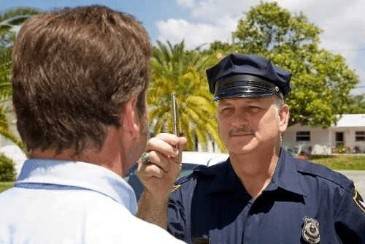Here at DUINewsBlog.org, The Wagner Law Firm, West Virginia’s Premier DUI Defense Firm, strives to continually bring you the latest and most current developments and discussions in DUI law around the country.
 This particular blog centers around the new field sobriety testing manual issued by the National Highway Traffic Safety Administration, “DWI Detection and Standardized Field Sobriety Testing” in March of 2013, replacing that of the old February 2006 issued manual.
This particular blog centers around the new field sobriety testing manual issued by the National Highway Traffic Safety Administration, “DWI Detection and Standardized Field Sobriety Testing” in March of 2013, replacing that of the old February 2006 issued manual.
By way of backdrop, in 1975, so called “extensive scientific research studies” were sponsored by NHTSA through a contract with an outfit called the Southern California Research Institute (SCRI) to determine which roadside filed sobriety tests were most accurate. SCRI publishing the following three reports: 1) California – 1977 (Lab); 2) California – 1981 (Lab and Field); and Maryland, District of Columbia, Virginia, North Carolina: 1983 (Field).
SCRI reportedly traveled to law enforcement agencies throughout the United States to select the most commonly used field sobriety tests. Six tests were used in the initial stages of this study: 1) One Leg Stand; 2) Finger to Nose; 3) Finger Count; 4) Walk and Turn; 5) Tracing (paper and pencil exercise); 6) Nystagmus (called alcohol gaze nystagmus in final report).
Laboratory research reportedly indicated that three of these tests, when administered in a standardized manner, were supposedly a “highly accurate and reliable” battery of tests for distinguishing BACs at or above 0.10; Horizontal Gaze Nystagmus (HGN – a.k.a. the eye test), Walk and Turn (WAT), and One Leg Stand (OLS).
The research, per NHTSA, reportedly showed that these tests were the most accurate and the remaining tests were merely reassessing the same skills. Further reporting that while many field sobriety tests are valid tests, the Standardized Field Sobriety Tests have been validated through numerous research studies.
NHTSA analyzed the laboratory test data and found: HGH, by itself, was 77% accurate; WAT, by itself, was 68% accurate and OLS, by itself, was 65% accurate in determining BAC’s at or above 0.10, which means 23 out of a 100, 32 out of a 100 and 35 out of 100 law enforcement got wrong even when administered in full compliance with the NHTSA guidelines on proper administration. Hardly reliable.
According to NHTSA, three standardized field sobriety test validation studies were undertaken between 1995 and 1998: Colorado in 1995, Florida in 1997 and San Diego, California in 1998, with the Colorado study reportedly using “experienced” law enforcement personnel in the use of SFST’s, while the Florida and San Diego studies reportedly studied SFST validation at the lower 0.08 BAC level that is now the per se legal limit in all 50 states.
According to NHTSA, the 1998 San Diego validation study indicated that the HGN was 88% accurate in determining BAC’s at or above 0.80, the WAT 79% and the OLS 83%. However, NHTSA does not explain how these percentages inexplicably increased from 77%, 68% and 65% in the 2006 manual to the now offered 88%, 79% and 83% reliable numbers when the study itself was reportedly done in 1998, fifteen years ago.
Further, NHTSA does not highlight nor properly point out to us citizens that these roadside field exercises -a.k.a. roadside gymnastics- are strictly designed for the limited purpose in assisting law enforcement on whether or not there is “probable cause” to arrest a citizen for driving under the influence or not.
Translated: They are not remotely “scientific”, nor are they remotely fool proof and reliable tests to determine whether a citizen is legally intoxicated or not, much less on a beyond all reasonable doubt standard.
So, what does all this mean you ask? To The Wagner Law Firm, West Virginia’s Premier DUI Defense Firm, and CEO Harley Wagner, it means that a citizen who comes in contact with a law enforcement officer anywhere in this country, or the world for that matter, who wishes you to undergo these supposed roadside field tests should in no way comply and agree to take. For why in the world would you submit to tests that are inherently unreliable and designed to be used against you in court?
The back of my business card says it best:
“My lawyer, Harley Wagner, has told me not to talk to anyone, not to answer any questions and not to reply to any accusations. I do not wish to take any roadside field or breath tests, nor do I consent to any search of my person or automobile. I do not agree to any of these things without my lawyer present and I do not wish to waive any of my constitutional rights. I now want to call my lawyer.”
Any information given in these web pages does not constitute legal advice or establish an attorney-client relationship with West Virginia DUI lawyer Harley Wagner or with The Wagner Law Firm. This legal web site is intended solely for marketing and advertising purposes. The information contained on this site is meant to provide you with an overview of the representation our law firm offers. Plus, Mr. Wagner tries to supply you with useful information and legal guides for your edification.
The information contained on these pages should not be used as a substitute for speaking with a DUI attorney in WV about your criminal defense issues and is not meant to comprehensively address your specific legal issues, which will be different in every case.
Much like having a medical condition, unique situations require a unique diagnosis and treatment. DUI lawyers near me have varying levels of experience in DUI defense. Therefore, always compare legal services and then consult a West Virginia attorney for legal advice regarding your specific matter.
